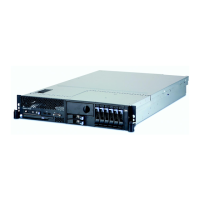Chapter 12. Cable Planning
Before shipment, the customer is asked to provide specific planning information concerning the physical
layout of the installation.
This chapter can help you plan your layout by presenting planning information on some cables used to
interconnect the system units and devices. The chapter includes information on cable length and
measuring techniques and some sample cable-planning charts. Other cable planning charts can be laid
out as necessary. The Adapters, Devices, and Cable Information for Micro Channel Bus Systems , order
number SA23-2764 or Adapters, Devices, and Cable Information for Multiple Bus Systems, order number
SA23-2778 has detailed information on cable feature codes, part numbers, and pin-out charts for cables
available to be purchased and customer-supplied cables.
You must plan the type of cable, cable path, and cable length. Consider not only your current needs, but
also your anticipated growth and the relocation of personnel.
To assist with the installation of your system, you should note cable paths on your office layout.
The customer is responsible for planning for the installation of interconnecting cables, including the proper
lightning and surge protection as necessary and should contact the appropriate contractor for guidance
and assistance as required. If the cables discussed in the cable publication do not meet your needs, talk
to your marketing representative or cabling vendor about custom-cabling alternatives.
General Considerations
In preparing for cabling, consider the following:
v Where applicable, electrical and physical specifications of cables you currently have and plan to use
with the new system must be compatible with the standards mentioned in this book. If no standard is
specifically mentioned in this book, the standards for the interface on that adapter must be met.
v Lengths and paths of cables. See “Cable Measuring” on page 350.
v Communication signal cables should be installed away from power lines or other sources of electrical
interference.
v Toroid and shielding considerations. Shielded cables should be used in applications where a shielded
connection is provided. Toroid kits should be applied to cables when provided.
v Labeling of cables and ports you currently have in order to indicate which devices you want attached to
them. See “Cable Labeling Reference Information” on page 365.
v Electrostatic discharge (ESD) considerations. In particular, unprotected patch panels, punch blocks, or
other intermediate routing or switching devices used in cabling can allow ESD into the network.
Note: Lightning protection must be provided on any cable which travels outside of the building in which
the system or device, such as a terminal or printer, is installed. Contact a cabling vendor about
providing lightning protection for those cables. Fiber-optic cables do not require lightning protection.
349

